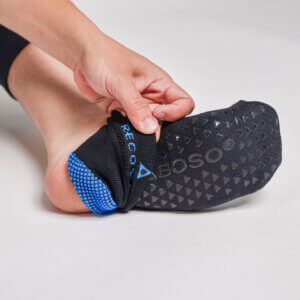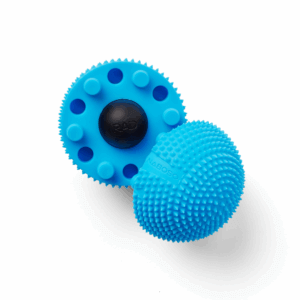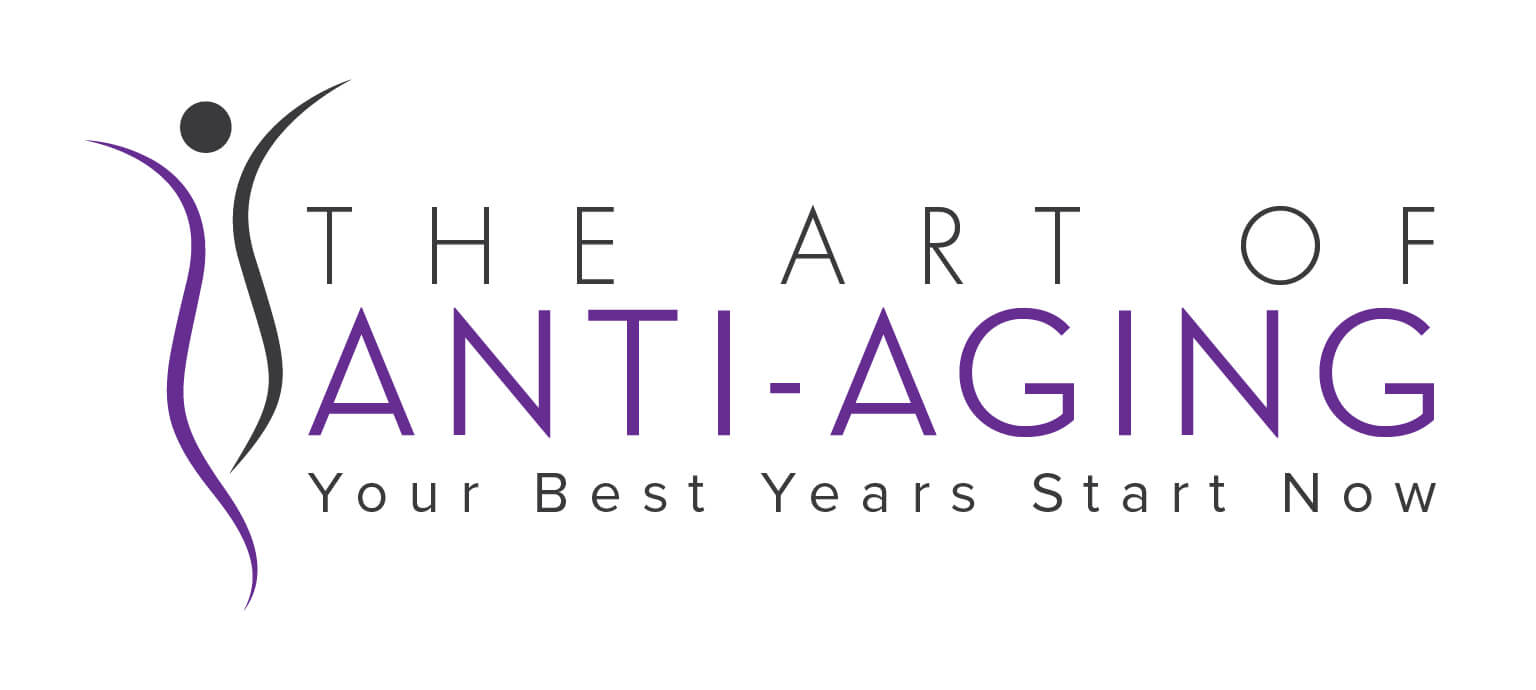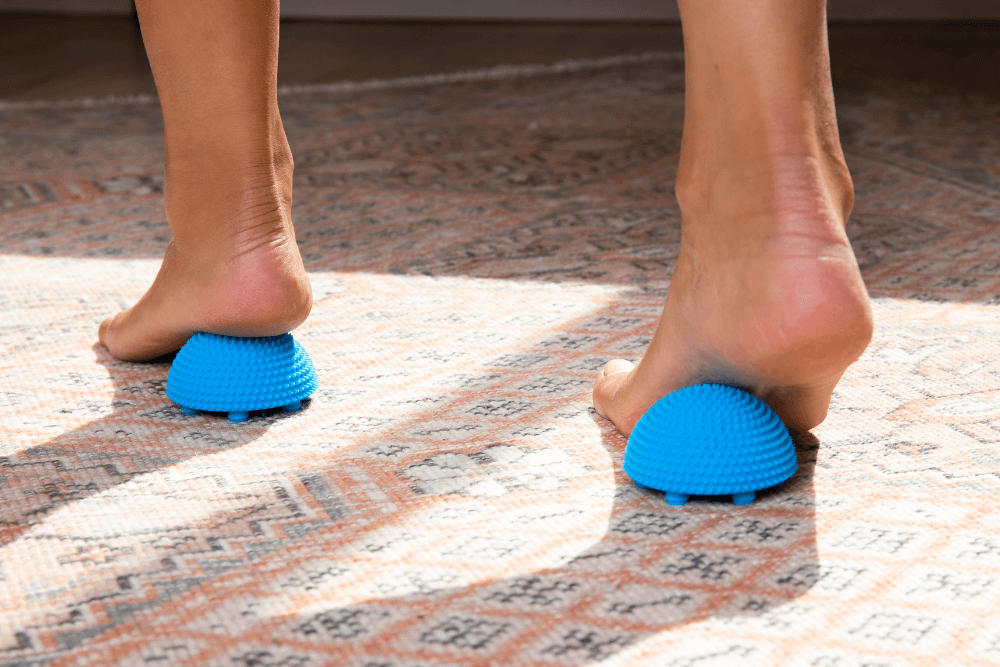 Most people know they should eat better, move more, and get enough sleep if they want to age well.
Most people know they should eat better, move more, and get enough sleep if they want to age well.
However, there is another piece of the longevity puzzle that far too many overlook, and it is often the one that separates those who remain strong and independent well into their 80s and 90s from those who do not.
That missing piece is balance and mobility.
Protecting your balance and mobility prevents you from falling, allows you to keep exercising and moving, and helps you maintain your independence and freedom as you age.
However, the physical benefits of balance and mobility go beyond your ability to maintain stability and movement. They are direct reflections of your nervous system, muscle health, and brain-body connection, and are powerful predictors of how long (and how well) you will live.
The truth is, even if you consider yourself healthy, these two abilities often quietly start to slip away in your 50s, and unless you pay attention to two specific areas, the decline tends to accelerate.
Let’s dive into the two big, little-known problems that sabotage your balance and mobility, and how to fix them from the ground up.
Problem #1: Loss of Balance
 Balance is not just about staying on your feet. It is one of the clearest mirrors of your longevity.
Balance is not just about staying on your feet. It is one of the clearest mirrors of your longevity.
According to the CDC, one in four adults over 65 falls each year, and falls are the leading cause of injury-related death for older Americans.
Even a single fall can trigger a devastating chain reaction: pain, fear of falling, reduced activity, and loss of independence. It is no exaggeration to say that protecting your balance protects your life.
A 2022 study reported by the British Journal of Sports Medicine found that middle-aged and older adults who could not stand on one leg for 10 seconds had an 84% higher risk of death from all causes within seven years.
Researchers noted that balance (just like heart rate or blood pressure) is a powerful indicator of overall vitality.
So why does it decline?
Part of the answer lies in your feet. They are home to over 200,000 nerve endings constantly sending messages to your brain about pressure, terrain, and body position.
This sensory feedback, called proprioception, is the quiet, continuous conversation that keeps you upright.
Research shows that decades of wearing thick, cushioned shoes, walking on flat floors, and sitting for long hours dull these nerve endings.
As those signals fade, your brain becomes less able to make the tiny postural adjustments that keep you stable, and your risk of falls increases.
The Science Behind Sensory Stimulation
 Recent research backs this up. A study published in Frontiers in Aging Neuroscience demonstrated that stimulating the soles of the feet through textured or “sensory” insoles can immediately improve postural sway and balance in older adults.
Recent research backs this up. A study published in Frontiers in Aging Neuroscience demonstrated that stimulating the soles of the feet through textured or “sensory” insoles can immediately improve postural sway and balance in older adults.
Additional research supports this mechanism: textured insoles and other forms of gentle sensory stimulation (such as wearing textured compression socks) have been shown to improve ankle position awareness and gait control in older adults, further strengthening the case for maintaining active sensory pathways.
In short, balance does not start in your head; it starts in your feet. Keeping those nerve pathways active is one of the most effective ways to stay strong, steady, and safe as you age.
Ground-Up Practices to Rebuild Balance
- Barefoot minutes. Spend 5–10 minutes a day barefoot on varied, safe surfaces (grass, carpet, cork mat) to retrain your proprioceptors.
- Foot-wake-up drills. Roll a small textured ball under each foot for 30 seconds. It stimulates nerve endings and loosens fascia.
- Single-leg stands. Balance on one foot for 10–20 seconds while brushing your teeth or washing dishes; switch sides. Gradually close your eyes to increase difficulty.
- Slow heel-to-toe walking. Walk a straight line, placing one heel directly in front of the opposite toe; it trains coordination and postural control.
- Ankle and toe mobility circles. Rotate your ankles, spread and lift your toes, simple moves that keep joint range and nerve flow alive.
Problem #2: Joint Stiffness and Reduced Mobility
If balance is about awareness, mobility is about freedom: the ability to move your body easily, fluidly, and without pain.
It is what lets you bend to tie your shoes, climb stairs, or walk with confidence. Just like balance, mobility is one of the strongest predictors of longevity.
Studies show that mobility tests such as gait speed, sit-to-stand ability, and flexibility are not just measures of fitness. They are powerful indicators of how well you age and how long you live.
One large analysis of more than 34,000 older adults found that for every 0.1 m/s faster gait speed, the risk of death dropped significantly.
Another long-term study revealed that people who struggled to sit down and stand up from the floor without using their hands were five times more likely to die within 12 years than those who could do so easily.
In other words, how well you move today predicts how well you will live tomorrow.
The Mobility Decline Begins at the Foundation
 Many people assume joint stiffness and reduced mobility start in the knees or hips. Yet again, the truth is, it often begins at the feet, your body’s foundation.
Many people assume joint stiffness and reduced mobility start in the knees or hips. Yet again, the truth is, it often begins at the feet, your body’s foundation.
Each foot contains 26 bones, 33 joints, and more than 100 muscles, tendons, and ligaments that support your body and absorb impact.
Over years of wearing restrictive shoes, walking on hard, flat surfaces, and sitting too much, those muscles weaken, the fascia tightens, and the joints lose their range of motion.
That loss of mobility does not stay in your feet. It ripples upward, altering your gait, posture, and the alignment of every major joint.
Weak or stiff feet can contribute to knee pain, hip tension, and even back problems, forcing your body to compensate with inefficient movement patterns.
A 2025 randomized controlled trial found that adding intrinsic foot muscle training to standard lower-body exercises significantly improved postural stability in older adults.
Other studies show that targeted foot-strengthening programs can enhance gait efficiency and reduce fall risk, both of which directly affect longevity.
Why Mobility Matters for Longevity
Mobility is associated with movement, however it also impacts circulation, detoxification, and brain health.
When your joints move freely, blood and lymph flow efficiently, delivering oxygen and nutrients to tissues and clearing out waste.
Movement also boosts levels of brain-derived neurotrophic factor (BDNF), a compound that supports memory and cognitive longevity.
When stiffness sets in and you stop moving as much, everything slows down: your metabolism, your brain activity, and your sense of vitality.
That is why maintaining joint mobility, especially from the feet upward, is one of the simplest and most powerful ways to preserve youth from the inside out.
Foot-Centered Practices to Rebuild Mobility
- Foot rolling for fascia release.
Use a textured ball to gently roll under the arches, heels, and toes of each foot for 1–2 minutes. This helps break up adhesions and improve blood flow. - Toe spreads and lifts.
While standing or sitting, spread your toes wide, then lift and lower them individually if possible. This wakes up intrinsic foot muscles that stabilize your stride. - Calf and ankle mobility.
Perform slow ankle circles or flex-and-point stretches to maintain joint range. Add calf raises to strengthen the lower leg and improve push-off power. - Short-foot exercise.
While standing, gently draw the ball of your foot toward your heel without curling your toes. Hold for 5 seconds, then release. Repeat 10 times per foot. This strengthens the arch and supports better alignment up the kinetic chain. - Dynamic movement variety.
Walk on uneven surfaces when safe (grass, sand, pebbles). Your feet and ankles will automatically adapt to the terrain, retraining balance and joint mobility at once.
Joint stiffness and reduced mobility are not just inconveniences of aging, they are signs that your foundation needs attention. By strengthening and mobilizing your feet, you help every other joint above them move more freely and efficiently. And as science continues to show, the better you move, the longer (and better) you live.
Conclusion
 Balance and mobility are your longevity lifelines. They determine how freely you move, how confident you feel, and ultimately, how long you thrive.
Balance and mobility are your longevity lifelines. They determine how freely you move, how confident you feel, and ultimately, how long you thrive.
That is why it is so important to take care of your feet. They are your foundation for achieving continued stability, movement, and independence as you age.
Continue to reawaken your nerves, strengthen your muscles, and keep moving, from the ground up. When you do that, every step you take can help you stay steady, vibrant, and full of life, for decades to come.
Top Recommendation: Naboso’s Grip Socks + Neuro Ball Bundle
Your feet are not just a support system. They are a sensory gateway that influences your posture, your nervous system, your balance, and even your confidence in motion. At Naboso, Dr. Emily Splichal (podiatrist, human movement specialist, and founder of the Barefoot Science movement) has long championed the idea that how you connect to the ground shapes how you move, feel, and age.
When those sensory pathways are awakened and cared for, everything above them functions better.
That’s why we highly recommend the Textured Grip Socks & Neuro Ball Bundle from Naboso, a simple, science-backed toolkit that helps you rebuild your foundation and move with ease, agility, and grace at any age.
Naboso Grip Socks
 These textured socks are designed to stimulate the thousands of nerve endings in your feet.
These textured socks are designed to stimulate the thousands of nerve endings in your feet.
That stimulation reawakens sensory awareness and strengthens the connection between your feet and your brain, helping to improve balance, posture, and coordination.
They are perfect for wearing during yoga, Pilates, or simply walking around your home to bring life back to your foundation.
Naboso Neuro Ball
 This smartly designed, dual-function ball helps release tight fascia and activate the small muscles in your feet that often go unused.
This smartly designed, dual-function ball helps release tight fascia and activate the small muscles in your feet that often go unused.
Its textured surface increases blood flow and mobility, while the two detachable domes allow for targeted massage and stimulation.
Regular use can restore flexibility, strength, and responsiveness, all
essential for maintaining fluid, confident movement as you age.



Super pertinent and actionable. Thank you!
Excellent article on balance! Thank you for the timely information.
Thank you. I am 53 and I have lost a lot of flexibility in my hips. (Menopause?). I also used to walk barefoot a lot, and I do in the house but our yard has to many ouchy things to step on.
Great article.
Article was very helpful and eye opening.
Thank you for a very practical and helpful set of tools for exercise and inevitably longevity.
Fantastic information that is foundational for balance, mobility and vitality. I use the neuroball daily and wear the compression socks to revive my feet after hiking or skiing in the Rocky Mountains!
Interesting info. Most focus on body health is elsewhere than the feet.
wonderful information
I would like a pdf of the excuses to print out
thanks
David
Very interesting and informative. I will walk in socks now to help with strength and mobility.
Very interesting and perfectly timed. I am beginning strength training and including balance work too. This is helpful information. Thank you!
This is an extremely important issue, and the article is informative and a necessary ‘must read’ for all of us. Thank you so much.